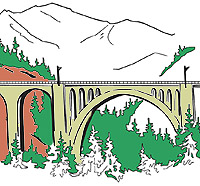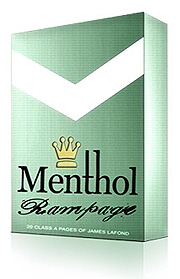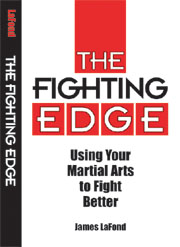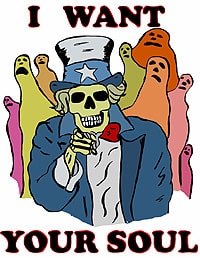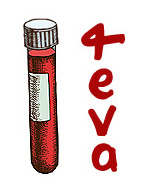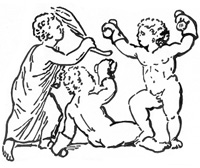“My only achievement is for the lion of the sand!”
-Gilgamesh
A Discussion of the Sources and Composition
This book was originally conceived as a comprehensive study of boxing from prehistory to the 21st Century. However, much to my delight, I soon found that the ancient sources were much richer and deeper than had been alluded to by modern academics and boxing writers. At least the academics had a clue, and I am much indebted to their research and insights. The result was that my grand history of boxing never made it out of the deep past.
This is the story of the many boxers of the ancient Western World; a journey of 2,251 years from that first anonymous warrior to that last anonymous athlete. In between we shall have our dialog with the hundreds of ghosts of boxers past. They count among their numbers heroes and villains, kings and slaves, the very gods of a vanished world and their sacrificial victims.
I have gathered my sources—from poems to paintings—arranged them in chronological order, and have even written three manuals on ancient boxing. However, I have not yet taken this journey as it should be taken, face-by-face, name-by-name, story-by-story, and fist-by-fist. Welcome to the world of the ancient boxers; that is every boxer we could find. May their story tell the tale for those who remain lost to us.
-James LaFond, February 28, 2011
Methodology
I decided early on that I would attempt to understand this long misunderstood subject through personal and complete immersion. Essentially I spent five years reading and taking notes for 40 to 60 hours per week, and training for 20 hours per week.
From September 1998 through September 2003 I read 1152 books on boxing and ancient Western history. This led me to a classics collection at the Peabody Conservatory in Baltimore City which has since been closed. During that period I also coached a boxing team and participated in five submission boxing bouts according to Greek rules, fought with Kenpo and MMA gloves. Also, for context, since all of the early ancient boxers were first and foremost weapon-fighters, I began fighting with sticks and wooden swords and dueling with dull machetes and shields.
I fought my last pugmakhia [boxing according to ancient Greek rules] bout on Saturday September 14th of 2002, against Chuck Goetz, a stick-fighter and TaeKwonDo fighter. I lost by submission after 27 minutes and 31 seconds. As of this writing, I have not been permitted to spar by my boxing coach, Mister Frank Gilbert, since 2005. He says that I bleed too much and that he is too old to swing a mop. I can still manage a fare 4-round effort against a heavy bag. So, with boxing still in my muscle-memory and competition as a stick-fighter still keeping me in the prize-fighting zone, I think it is time that I finally tell the story of those hard men that I have attempted so pathetically to emulate.
From 2003 through 2006, while writing the original draft of my comprehensive study of ancient boxing, I enlisted the aid of: Professor David Carl [mostly to check my Greek] of Saint John’s College at Santa Fe; research Scientist and martial arts instructor Jay Harding [mostly to check my modern analogies and biomechanical deductions] of the University of Iowa; and Joseph Bellofatto to bring to life these ancient fighters in art. His full body of work [148 pieces] is available through the author [published on this site in The Broken Dance]. Notes on illustrations are provided at the end of each chapter.
I will attempt to tell the stories of these long dead men as authentically as I can manage, according to the following beliefs, which I hold to be true:
1. Ancient names meant something, and in the case of prize-fighters were in actuality fight-names.
2. Depictions of athletes in ancient art, being done by men who often engaged in these sports, tend to represent accurate depictions of the sport, within the limitations of the artist’s skill and the medium he was working in; and that most such art commemorates actual bouts.
3. Depictions of athletic events in ancient literature represent boxing as practiced at the time the author lived, not necessarily those methods current at the time in which his story was set.
4. That the pantheon of ancient Greek gods, in part, had its origin in ancestor worship [as illustrated by actual historic figures, such as Theogenes the boxer, who were deified]; and that such gods and heroes who were regarded as the patrons of a particular sport represent the evolution of the heroization of a particular ancestor in association with that sport. This is my most controversial assertion. In other words, Apollo, patron god of boxing, is assumed, by this author, to be based on an actual prehistoric boxer [probably a political leader] by the name Apollo.
5. Although culture, morality and sporting methods might change over the centuries and millennia, basic human nature, including the passions, hopes and dreams of fighting men, remains essentially unchanged.
The fights and training sessions depicted, will, whenever possible, be composites. If I have determined that a fighter competed in 328 B.C., and a have a piece of physical art representing a fight from that year, or close to it, I will strive to depict the action according to that model, and then will not reuse that visual model again. This will be precisely inaccurate in almost all cases. But maybe, just once, this will result in the actual reconnecting of a literary ghost with his painted or carved depiction.
Whatever can be said of the men you are about to meet, they were undeniably tough and suffered a fighter’s risks in a world far more stark and unforgiving of failure and injury than our own.
A Brief on the Origin of Boxing
This is an extensive subject, and the answers, such as they are, consist of many intertwined influences and associations. Virtually all of the evidence is circumstantial. There is only one smoking gun, the Abrahams tank of the day: the war chariot. Evidence of ancient boxing in the Western World appears nowhere in the historical record until the advent of the war chariot. Boxing appears in Mesopotamia, Crete and Egypt* soon after the introduction of the war chariot, and in the order in which the chariot was introduced into these cultures.
It appears that boxing was introduced to these cultural centers by the same Indo-European invaders who introduced the war chariot and the composite bow. There is also evidence that an Indo-European people, the Arуans, also imported these three elements into the Indus Valley region to the east. It cannot be determined for certain if boxing developed after these invasions, or was brought in by the invaders. In light of the strong associations between sky gods and boxing I am in favor of the idea that boxing developed as part of the Indo-European warrior culture on the Central Asian steppes as a preparation for dueling.
Dueling between the champions of rival armies is an activity made more practical by the presence of chariots that could serve as taxis. There are strong correlations between dueling and boxing traditions in later cultures.** The most notable example is the fact that the first English bare-knuckle boxing champion was James Figg, who was also known as “the Atlas of the Sword” by his contemporaries, who regarded him as more accomplished with the sword than the fist.***
What we do know for certain is that boxing is a cultural expression, and that the warrior-culture that brought boxing onto the world stage as the supreme manhood ritual, rode out of Central Asia about 4,000 years ago; soon to impose their values and martial arts, if not their actual rule, on those who farmed the fertile river valleys of the ancient Near East, and sailed the inky waters of the Middle Sea.
Foot Notes
*There is some circumstantial evidence for the presence of boxing in Egypt before this time, but nothing definitive. Egypt had a strong tradition of very violent wrestling and stick-fighting. Either of these sports may have given rise to boxing methods, and certainly contributed to the unique character of Egyptian boxing.
**Northern Italy circa 1200 A.D. and England circa 1700 A.D. both had strong sword & shield dueling and stick-fighting traditions that gave rise to boxing.
***A Treatise Upon the Useful Science of Defence, by Captain John Godfrey, 1747
The Illustration
Dragon Boxer [Found in The First Boxers]
A partial reconstruction of a scene carved on the Golden Bowl of Hasanlu, attributed to the Urarturian culture of Armenian Iran, and dated to 1,000 B.C.
This and the associated scenes on the bowl were very important to the development of the author’s theory for the origin of boxing.
For an in-depth discussion of boxing origins see The First Boxers: a Fighter’s View of Boxing and Prize-fighting from Gilgamesh to Goliath, available from the author.


